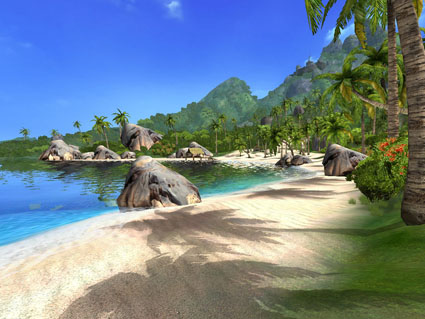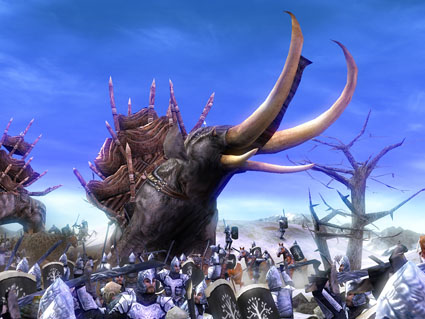Bundle, Installation & more Features
Bundled ItemsIn the box, we note the fact that while others go cheap and include hardly any software, Galaxy is paying attention to its product. There is a reasonable bundle of software and goodies. Let's have a look:
Cyberlink PowerDVD, Chaser and MotoGP 2. These are all full versions. Next to a manual we can find a S-Video & S-Video to Composite output cable. So everything you need to get started is present. Next to the card itself we'll see a plethora of cables in the form of a nice Molex power supply cable. DVI to CRT/VGA adapter so that you are able to hook up 2 CRT VGA monitors to your card.
If I understood properly they will also release a Limited Edition which includes the game Far Cry.
The Installation
It's really not hard to install a graphics card yourself nowadays. Especially with brands like ATI and NVIDIA who use unified driver sets. If you have a really new product then make sure you have the latest drivers on your HD. First uninstall your current graphics card's drivers carefully, this is very important especially if the older graphics card was from a different chipset manufacturer. Now power down the PC and pull out the power cable. Insert the graphics card in the slot, secure it with a screw, connect the monitor and boot up windows, run the driver installation, then restart and you are set to go. That's all. Also important, make sure you have the latest version of DirectX (9) installed.
UltraShadow II
Last year we got acquainted with NVIDIA's UltraShadow technology. Shadows, nothing that new you might say. Yet precise and accurate shadows are so important to a 3D scene. They contribute to the 3D scene's environment, it's a step closer to the real thing, I guess... except for performance and that's where UltraShadow II comes in.
UltraShadow II allows the game programmer to define a bounded portion of the scene (often called depth bounds), which limits the calculation of lighting source effects to objects within that specified area. By limiting calculations to the area most affected by a light source, the overall shadow generation process is highly accelerated. Stenciled shadow volumes do not require texturing or color so UltraShadow II hardware can double the rendering horsepower to generate stenciled shadow volumes at up to twice the standard pixel-processing rate. Did you know that allows the recently released and highly shadow intensive Doom III to run 3 to 4 times faster in regards to shadow processing?! That's not made up stuff guys.
NV4x Video Architecture
Next to being a gaming card, starting with the GeForce Series 6 some high-quality video options become available also. First off, Series 6 is a fully programmable video processor; you can aqctually use it in paint programs or software like Adobe After Effects. And hey, this has the first ever on-chip GPU video encoder.
Among the features are motion adaptive interlacing, integrated TV-Encoder, complete HDTV support (720p. 1080i, 480p, CGMS). We so need HDTV support here in Europe. Not only that but the NV40 now also can Decode and... Encode MPEG 1/2 and 4, and yes also real-time DiVX Decode/Encode!
Shaders Model 3.0
If you program or play computer games or even recently attempted to purchase a video card, then you will have no doubt heard the terms "Vertex Shader" and "Pixel Shader".
Funny story, I've been following some threads in our forums lately to see the ATI versus NVIDIA discussions regarding 3.0 Shader technology. It's now known that the x800 series from ATI (which we recently tested) does not support DirectX 9.0c Shader Model 3.0.
The step from 2.0 towards 3.0 is a small one and most Shader Model 2.0 games can easily be upgraded towards Model 3.0, which means enabling more tricks. DirectX 9 build C was just released so we are going to see more support for 3.0 Shaders. Is it a huge visual advantage over 2.0? No not at all yet any technological advantage is always welcome and preferred over a previous generation development. The general consensus for developers is to use as low a shader version as possible. Shaders 3.0 will be used only in several critical places where it gives a performance boosts.
Since I've started to ramble on about Shader technology I just realized that some of you do not even have a clue what I'm talking about. Sorry, that happens when you get a bit excited. Let's do a quick shader course.
What do we need to render a three dimensional object as 2D on your monitor? We start off by building some sort of structure that has a surface, that surface is built from triangles. Why triangles? They are quick to calculate. How's each triangle being processed? Each triangle has to be transformed according to its relative position and orientation to the viewer. Each of the three vertices that the triangle is made up of is transformed to its proper view space position. The next step is to light the triangle by taking the transformed vertices and applying a lighting calculation for every light defined in the scene. And lastly the triangle needs to be projected to the screen in order to rasterize it. During rasterization the triangle will be shaded and textured.
And now we finally get to the stage where we can explain Shaders. Vertex and Pixel shaders allow developers to code customized transformation and lighting calculations as well as pixel coloring functionality. Each shader is basically nothing more than a relatively small program executed on the graphics processor to control either vertex or pixel processing.
Far Cry
Shader Model 3.0 titles that we can expect soon: Lord of the Rings; Battle for Middle-Earth, Stalker, Vampire; Bloodlines, Splinter Cell X, Driver 3, Grafan, Painkiller, Far Cry and more...

Lord of the Rings - The Battle for Middle Earth - Shaders version 3.0 all the way.
